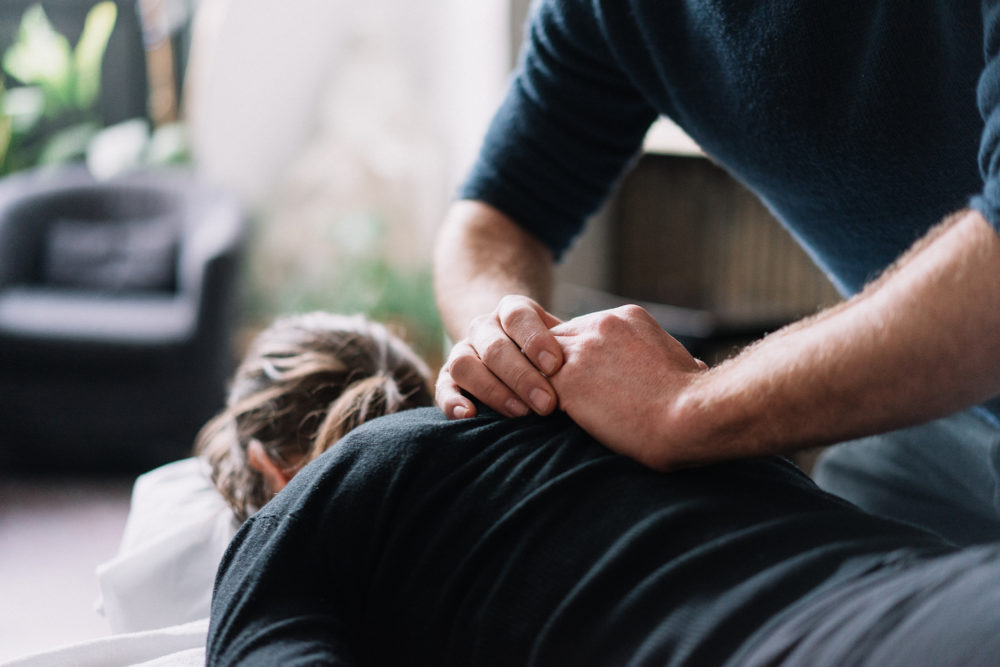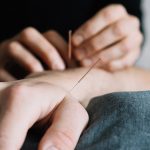
Comment pratiquons-nous le Tuina au Centre?
par Ethan Murchie
Dans notre école, nous parlons généralement de tuina, et par là nous entendons notre méthode de travail corporel. Notre méthode est le résultat de l’enseignement de Maître Hsu Hongchi et de son élève, notre professeur, Vince Black. Nous nous appuyons sur l’expérience du tuina, du massage thaï, de la thérapie craniosacrale et de l’ostéopathie ainsi que du xingyiquan, du baguazhang et du qigong, sans parler de l’acupuncture et des thérapies à base de plantes. Il ne s’agit pas d’un simple massage.
En général, je trouve que la façon la plus simple d’expliquer notre tuina est de dire qu’il est très similaire à l’ostéopathie traditionnelle. D’une manière qui fait écho aux instructions du fondateur de l’ostéopathie, Andrew Taylor Still, nous pensons qu’un bon tuina doit être basé sur une solide compréhension de l’anatomie et de la physiologie et qu’une fois appliqué, il doit être direct et simple. La seule différence est qu’en plus de l’anatomie et de la physiologie standard, un praticien de tuina travaille également avec l’anatomie et la physiologie du qi et du sang dans les canaux jingluo, les organes zangfu et d’autres principes directeurs de la médecine chinoise.
Dans le cadre de ces théories médicales chinoises, l’objectif des praticiens de tuina est simplement d’aider le corps à être droit et libre d’obstruction ou de contre-courant. Si tout est droit et circule bien, nous sommes en bonne santé, les blessures guérissent, les maladies disparaissent et nos vies sont calmes et équilibrées.
Nos professeurs ont mis l’accent sur le fait d’éviter le « travail chinois », c’est-à-dire de faire beaucoup de mouvements et de manipulations différents sans objectif clair en tête pour chacun. Pour cette raison, nos traitements semblent souvent beaucoup plus doux et plus calmes que ce que beaucoup de gens s’attendent d’un traitement de tuina.
Se connecter au qi du patient et se laisser guider dans le traitement par les signes du corps du patient sont les compétences les plus importantes. Comme le disait Maître Hsu, « Le qi ne ment pas ».
Cependant, un autre point important dans notre réflexion est le bon mélange du yin et du yang. Nous entendons par là que lorsque la stimulation douce peut faire le travail, nous sommes doux, et lorsqu’une stimulation plus forte est nécessaire, nous pouvons travailler plus intensément. Nous voulons nous adresser à la fois au qi et au sang. Vieux et jeune, grand et petit, faible et fort. Un bon traitement tuina est basé sur les besoins du client et doit être ajusté en fonction de chaque personne et de chaque séance en conséquence.
Notre méthode tuina utilise tous les outils disponibles de la médecine chinoise. Ainsi, en plus des manipulations manuelles, nous utilisons également des ventouses, de la moxibustion et des herbes externes sous forme de trempages et de pansements.
Dans l’ensemble, cela signifie que lorsque nous disons tuina, nous entendons une forme complète de thérapie qui est plus qu’un massage et qui, entre des mains compétentes, peut répondre à une grande variété de problèmes de santé courants et peut donc être considéré comme une forme efficace de soins de santé primaires de première ligne.
***
Prochaines dates de notre séminaire Tuina – Fondation :

